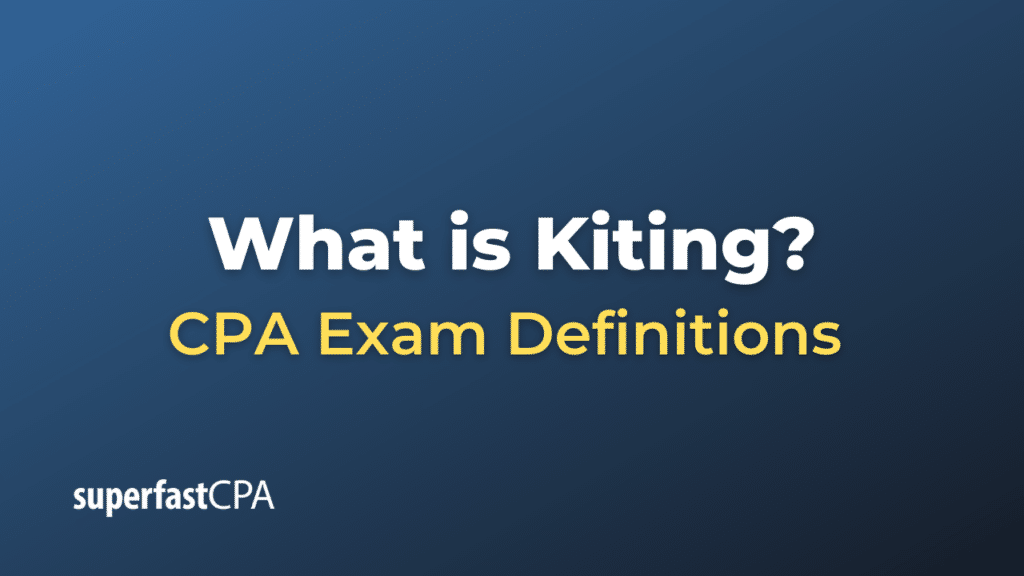Kiting
Kiting is a fraudulent practice that involves exploiting the float, which is the time it takes for a bank to process a check. A person or company might use kiting to artificially inflate the balance in a bank account in order to appear to have more funds than they actually do, or even to avoid overdraft fees.
Here’s a simplified example of how it might work:
- An individual has two bank accounts: Account A and Account B.
- Both accounts are nearly empty. Let’s say Account A has $10, and Account B has $5.
- The individual writes a check from Account A for $100 and deposits it into Account B.
- Before the bank has time to process the check (therefore realizing there are not enough funds in Account A to cover it), the individual writes a second check from Account B (which now falsely shows a balance of $105) for $100 and deposits it into Account A.
This cycle can be repeated, effectively giving the illusion that each account has more money than it actually does. The practice is illegal, because it involves writing checks from an account knowing there are insufficient funds to cover them, with the intent to commit fraud.
While faster bank processing and better fraud detection methods have made traditional check kiting more difficult, similar tactics can still be employed in other areas such as credit card kiting, where balances are transferred from one credit card to another before interest becomes due.
In all cases, it’s important to understand that kiting is illegal and can lead to criminal charges, fines, and imprisonment.
Example of Kiting
Let’s consider a hypothetical scenario to illustrate how check kiting might occur:
Imagine an individual, let’s call him John, has two checking accounts. One account is with Bank X and the other with Bank Y. Both accounts have very little money – $100 in Bank X and $50 in Bank Y.
On Monday, John writes a check for $500 from his account at Bank X and deposits it into his account at Bank Y, even though he doesn’t have enough funds to cover this amount in the Bank X account. The balance of the Bank Y account now appears to be $550, even though the check from Bank X has not yet cleared.
On Tuesday, before the check can bounce due to insufficient funds, John writes a check from his Bank Y account (which shows a balance of $550) for $500, and deposits it into his Bank X account. The balance of the Bank X account now shows as $600.
By continually repeating this process, John can give the illusion that he has more money in his accounts than he truly does, while the checks are in the process of being cleared.
It’s important to remember that this practice, known as kiting, is illegal. Today, banks have systems in place to detect such activities, and they also work in cooperation with each other and with law enforcement agencies to prevent and punish such fraudulent acts. If caught, John could face significant penalties, including criminal charges, fines, and potentially imprisonment.













